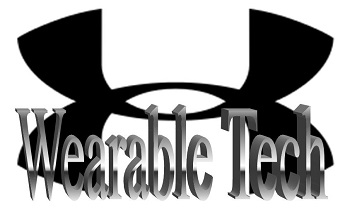The brand is creating a full lineup of wearables as well as digital apps as a part of their broader sports apparel strategy.
Under Armour is currently working on the creation of a full lineup of wearable technology products and complementary mobile apps that are to become a central component of their overall strategy to pass Nike Inc and to take the top global sports apparel spot.
This strategy was made more than clear last week at the Consumer Electronics Showcase (CES 2016).
At that event, Under Armour’s CEO and founder, Kevin Plank unveiled a number of new products that are headed into the brand’s series called “Connected Fitness.” Currently, Nike is holding the lead position in the global sportswear industry and that spot is considered to be quite a solid one. Last year, that brand reported over $30 billion in revenues, with $7.69 billion in sales having been generated exclusively within the most recent fiscal quarter.
However, when it comes to wearable technology, specifically, rivals such as Under Armour are stepping in.
 With a growing range of wearables in the form of high quality apparel and footwear, Under Armour is taking aim and is hoping to become a force to reckon with. It could be that this strategy may one day shake Nike’s stance on the top platform in the market.
With a growing range of wearables in the form of high quality apparel and footwear, Under Armour is taking aim and is hoping to become a force to reckon with. It could be that this strategy may one day shake Nike’s stance on the top platform in the market.
It doesn’t come a surprise that Under Armour feels that one of its top drivers in reaching its $7.5 billion sales target by 2018 is in the use of “Connected Fitness” and wearables. At the same time, many have found Under Armour’s speed of investment into this type of technology to be rather surprising. The reason is that it does leave the impression that the company has jumped from an idea in a business plan right into an actual series of products.
At the core of the brand’s wearable technology plan is the “UA HealthBox”, which includes a sports band upon which pretty much everything else is based. It tracks daily physical activity, heart rate and sleep. The HealthBox also includes a scale that is WiFi equipped and that reads both body weight and fat percentage.
According to figures released by comScore, smartphones played a notably larger role in overall online shopping.
comScore has released its holiday shopping data and has revealed that m-commerce generated $12.7 billion in sales, while online shopping as a whole brought in a tremendous $69 billion.
These figures show that mobile commerce is growing fast but desktop shopping is growing slower than predicted.
This revealed that it really was m-commerce that was dominating the scene in terms of growth rate during the holiday season. This growth rate was considerably larger than that of PC based purchases. Moreover, it was also pointed out that regardless of whether or not a sale was made, the traffic that was seen on websites was greater on mobile devices than it was on desktops and laptops. Smartphone based shopping also rose rapidly from 2014 to 2015. In fact, comScore recorded the rate of growth during that span of time as being 59 percent.
This shows very rapid growth for m-commerce, though not as quick as what some had forecasted.
 comScore recorded that the total e-commerce sales that occurred from November 1 through December 31, 2015 came to an estimated $69.08 billion. That research firm had previously predicted that the figure would have been closer to $70.01 billion during that span of time.
comScore recorded that the total e-commerce sales that occurred from November 1 through December 31, 2015 came to an estimated $69.08 billion. That research firm had previously predicted that the figure would have been closer to $70.01 billion during that span of time.
While mobile commerce did manage to exceed the forecast that comScore had put forward, desktop didn’t manage to do the same thing. Instead, it fell short of the predicted total by close to $2 billion. Once again, the largest single day for online shopping was on Cyber Monday, which fell on November 30, last year. On that one day, there were $2.3 billion in sales completed online.
That said, while there are a large number of analyses being released with regards to the totals in sales of e- and m-commerce, many analysts are saying that it is short-sighted to try to think of the sales as occurring either on one type of environment or another. Instead, many reports are starting to acknowledge that the line between online and offline sales, and the line between PC and mobile devices is quite blurred as consumers will often cross from one environment into another and, perhaps, back again before a final purchase is made.
 With a growing range of wearables in the form of high quality apparel and footwear, Under Armour is taking aim and is hoping to become a force to reckon with. It could be that this strategy may one day shake Nike’s stance on the top platform in the market.
With a growing range of wearables in the form of high quality apparel and footwear, Under Armour is taking aim and is hoping to become a force to reckon with. It could be that this strategy may one day shake Nike’s stance on the top platform in the market.
 comScore recorded that the total
comScore recorded that the total 